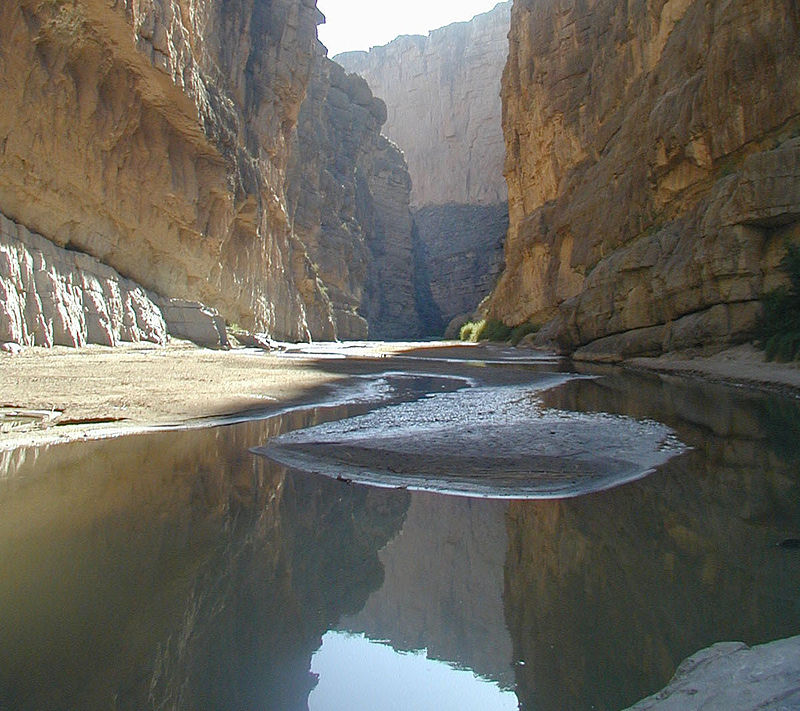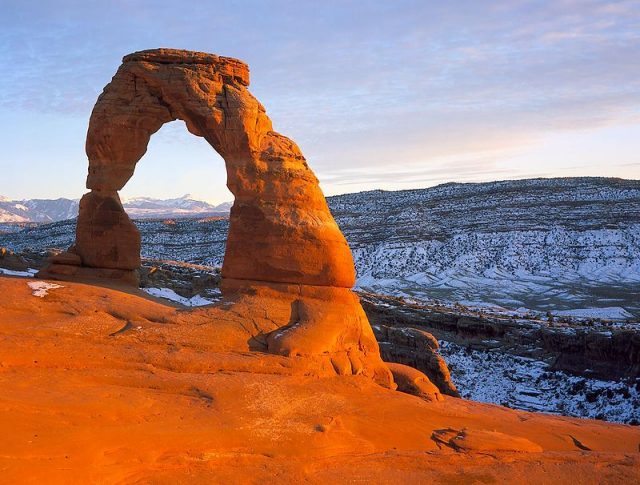Our National Parks – Some Say Now Is The Time To Franchise

It just doesn’t feel right to have the words “national parks” and “franchise” in the same sentence. The word pairing brings images of the Golden Arch over the Grand Canyon or standing in line for a Frappuccino in the specter of the Half Dome.
But taking into consideration the decades-long maintenance backlog facing the National Park Service, it might be time to consider an approach to the free market. Besides the maintenance bottleneck that has swelled to $12 billion, the National Park Service is facing other problems, such as budget deficits, complaints of overcrowding, and allegations of far-reaching sexual harassment.
A research center in Montana claims to have a way to solve the budget woes. They’ve pitched the idea to disband the Park Service in all ways but name and operate each park as its own standalone enterprise.
Embracing a free-market methodology would free each park from bureaucratic procedures and having to obey a national agenda. Currently, most of the Park Service’s yearly budget, $2.9 million in 2016, comes from the US Congress. Under a free-market system, each franchise owner would have a monetary incentive to protect their parks environment and natural resources.
The owner would also take responsibility for improving roads, extending facilities to draw in more customers, and creating an easier access to the park. And they could do all this without being bogged down with red tape or constraining funds.
As an example, Yellowstone National Park wants to build new washroom facilities in Lamar Valley to meet the needs of the increase of visitors or the park needs some extra revenue to cover its ever-increasing operating expenses. Currently, the Park has to get the approval of Congress and the President for these types of expenses. As a franchise, on the other hand, the park could address those problems immediately.
It would still be called Yellowstone National Park, but it would now have an owner, who would be asking: (a) Are we living up to the franchise agreement? (b) Can we find more economical and efficient ways to operate the park? (c) Are we really providing our customers with the product they want?
The Park would now have the money to do it. Not only that, but it’s been pointed out that Yellowstone could meet its operating costs with an $11 fee for each visitor. America’s most visited national park, the Great Smoky Mountains National Park, could cover its operational costs by charging visitors $2 each per day. The Park currently has no entrance fee.
What we’re talking about is a serious plan to add value to the National Park Service brand and protect new landscapes without adding significant spending. Here you can read a 2015 report on the parks proposal by a professional non-profit entity dedicated to the parks and other protected places.
The theory is that the National Park Service wouldn’t have control but would oversee each park owner. The government would still own the name and the land and the Park Service would act as a sort of ‘Park Headquarters’ for maintaining a broad, constantly operational standard.
It would be agreed that the franchise owner could operate the Park for profit and they would be able to charge entry fees. There will be certain things the franchise can’t do: for example, modifying or adding infrastructure to famous, iconic attractions. Would McDonald’s corporate office allow a franchisee to replace the classic McDonald’s ‘M’ with purple shooting stars’? Definitely not, but you get what we mean.
There are similar alliances that already exist but are operated, for the most part, by non-profit organizations. Environmental groups are responsible for protecting tens of thousands of acres of land that is available for the public to enjoy.
George Washington’s home has been maintained by a non-profit ladies organization for more than 150 years. But this plan is not about non-profit associations, it is about a free-market enterprise that would drive each park to significantly strengthen the strategy that works for it and eliminate the rest.
A public affairs officer of the Park Service said in an email that they wouldn’t comment on outside proposals pertaining to policy and restated that the national parks belong the to the American people. But this brand of free-market environmentalism and protection is not so easily dismissed by economists.
Not everyone agrees that it is a good idea, but you can see why many people think that it is certainly a proposal worth consideration.

Budget deficits are but only one of the problems that free-market environmentalism and protection can solve and it should be pointed out that some components of the parks are already privatized. There are over 500 concessions that have contracts with the National Park Service.
These are contracts to operate transportation, food, and lodging services as well as available Park tours and equipment rentals. But a critical downfall of this type of free-market enterprise is not being able to address large-scale environmental problems in the Park, such as air pollution. We’re talking about projects that are just too big for the budget of the franchise owner, Outside reported.
We must remember that the National Park Service wasn’t formed to function as a revenue stream. There is much more we can gain from our national parks than economics. The natural beauty and the experiences one enjoys can’t be measured by economic factors.
With the free-market proposal, what will provide the incentive for franchise owners to promote appreciation for nature among visitors or to inspire outdoor ethics? A question to ask yourself – would privatization of the parks challenge the governing principal to protect our country’s most spectacular attractions for future generations to enjoy?
We can present our claims in the context of fundamental values, but in the end, who is it that has to make these decisions, while considering all our needs and desires. The question that should come to the forefront is, where do we contest those competing demands; environmental, economic, or otherwise? Do we do it with congressional appropriations or do we do it in a free marketplace?
